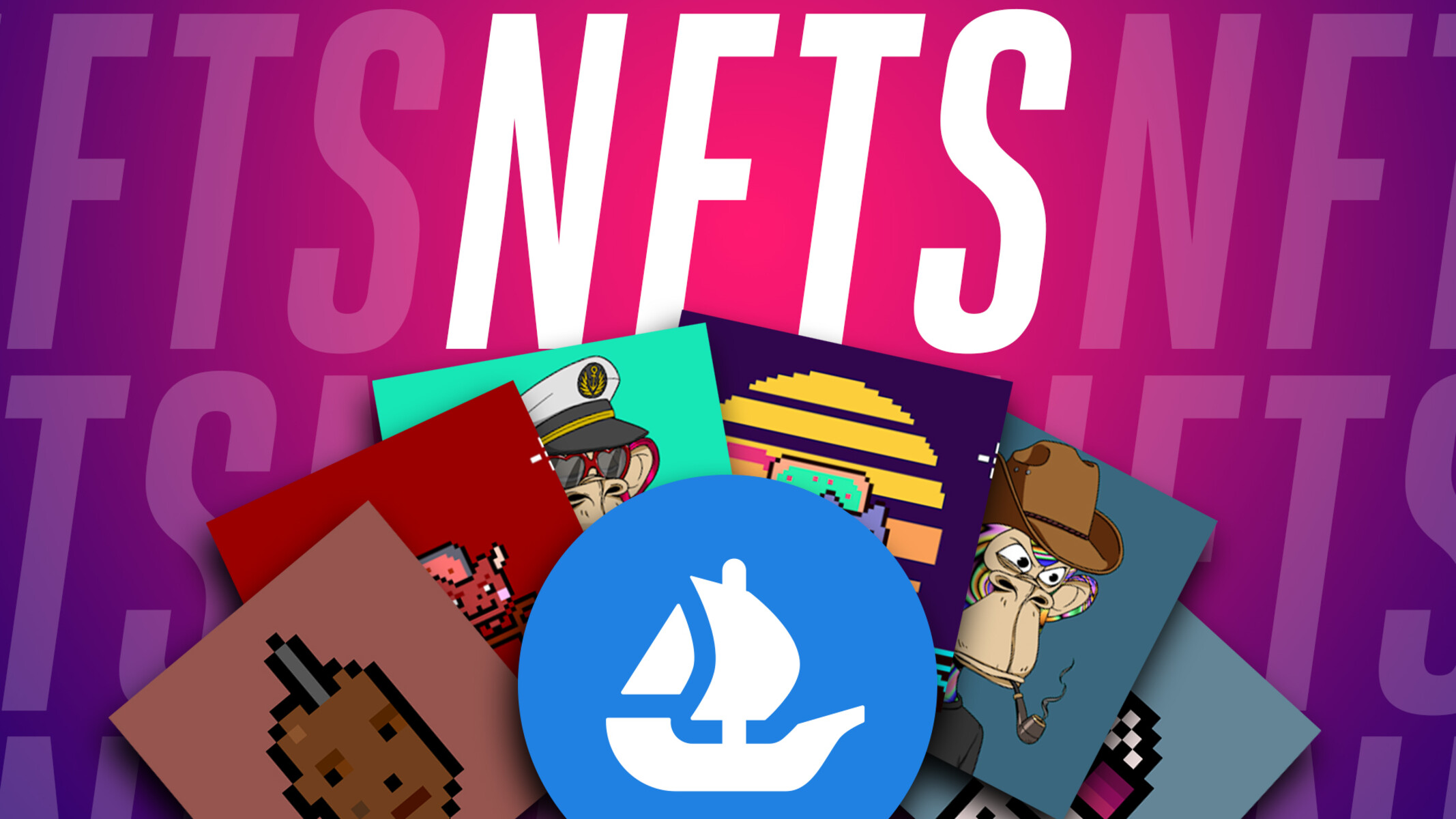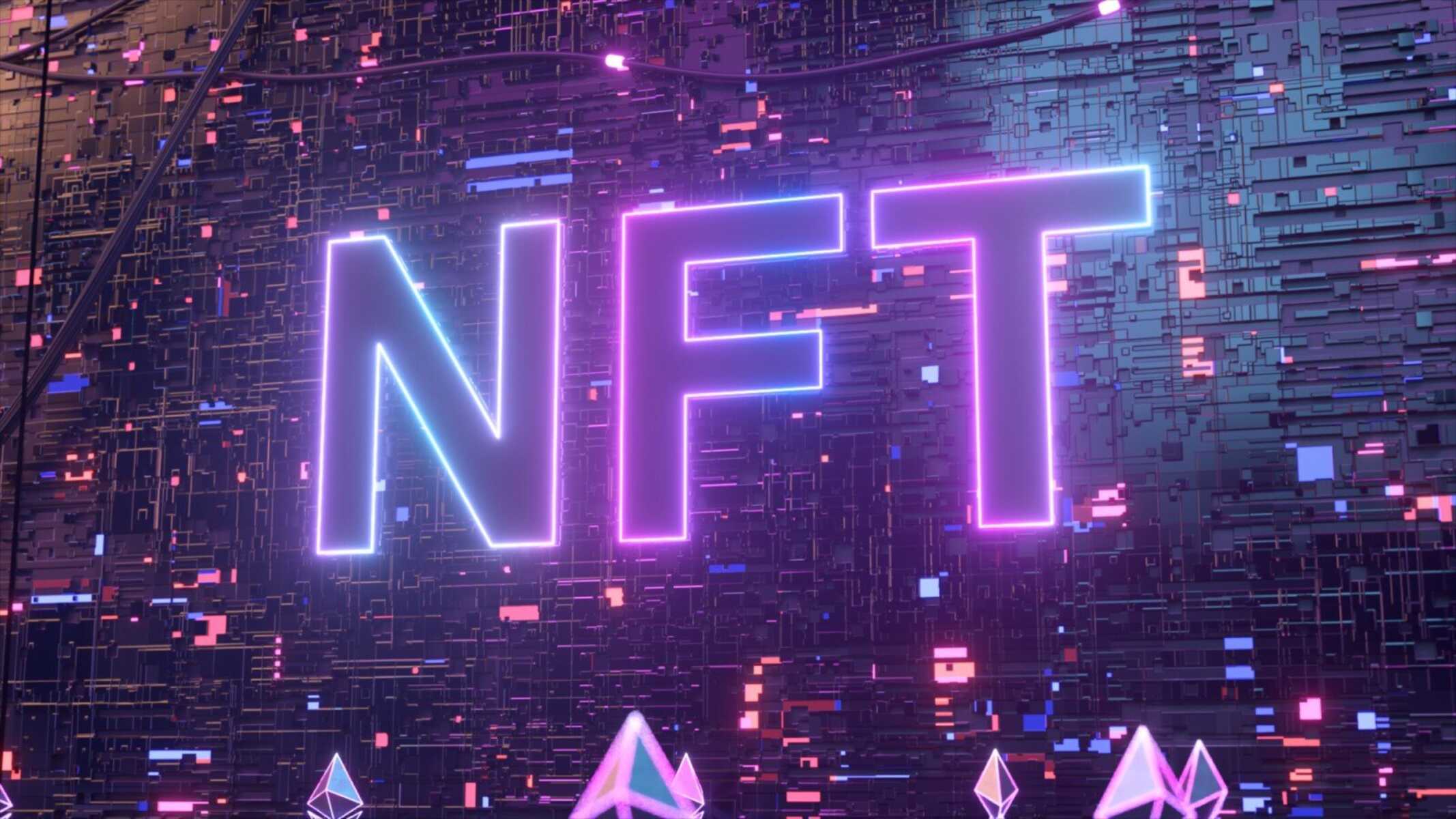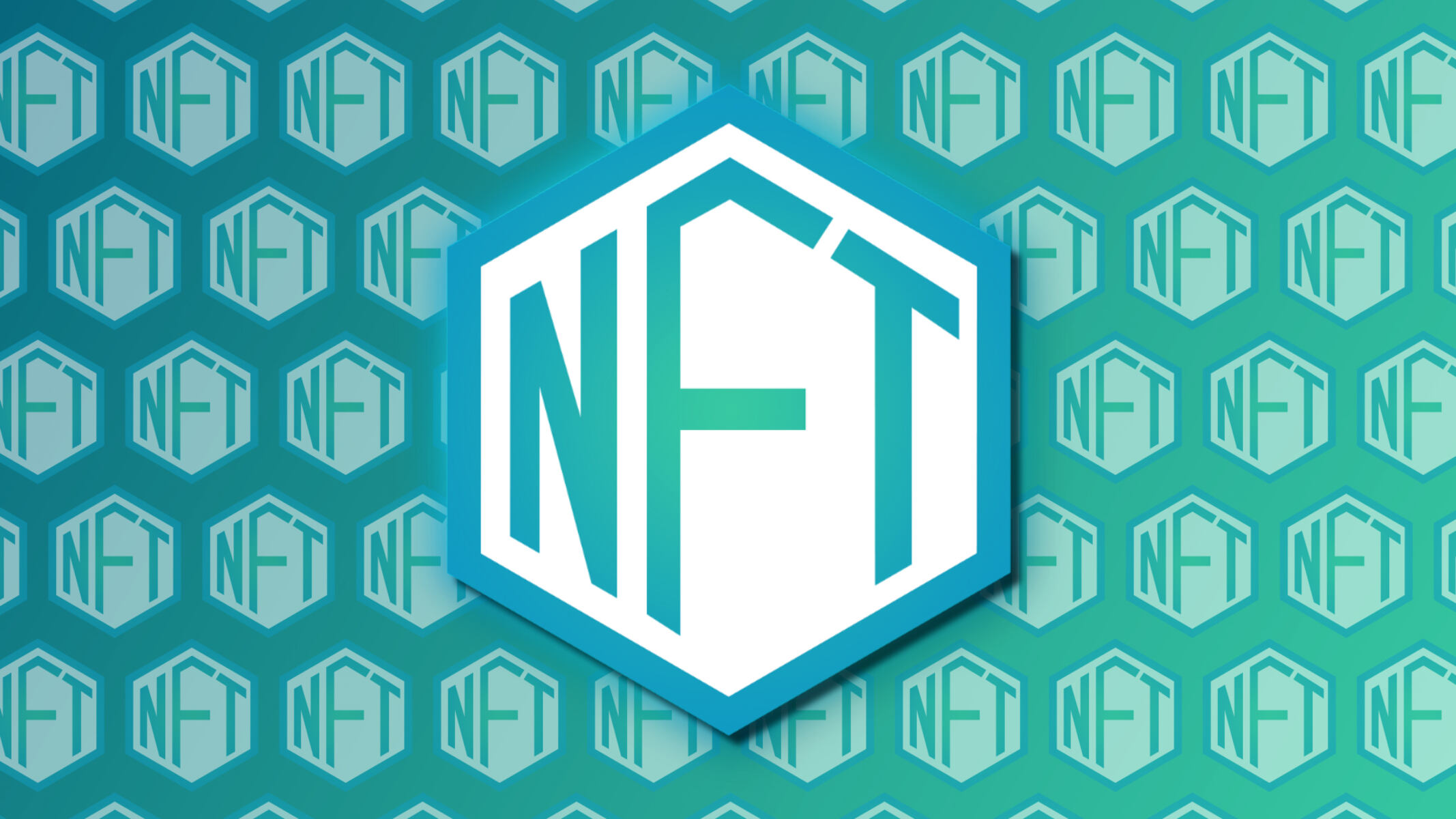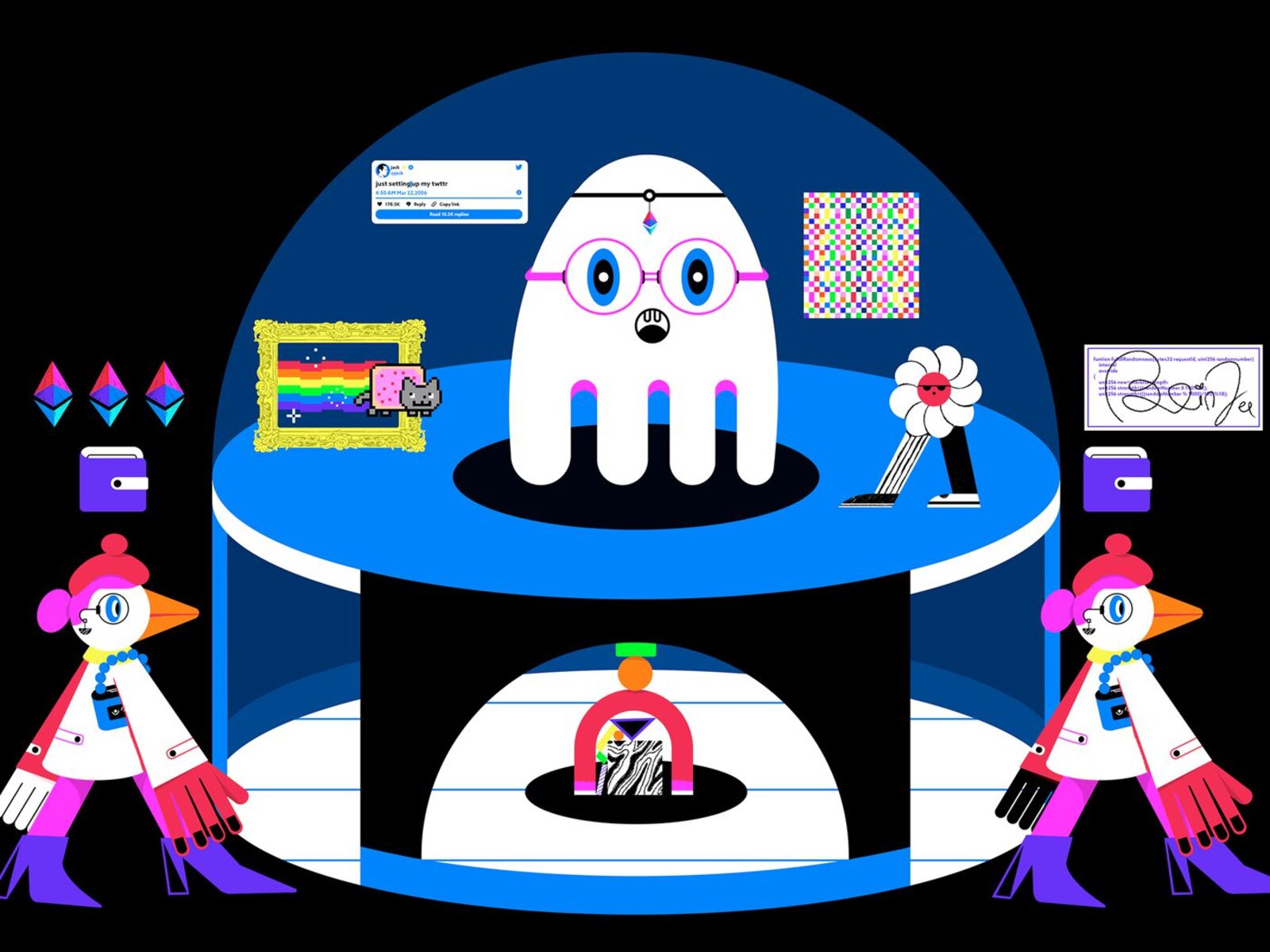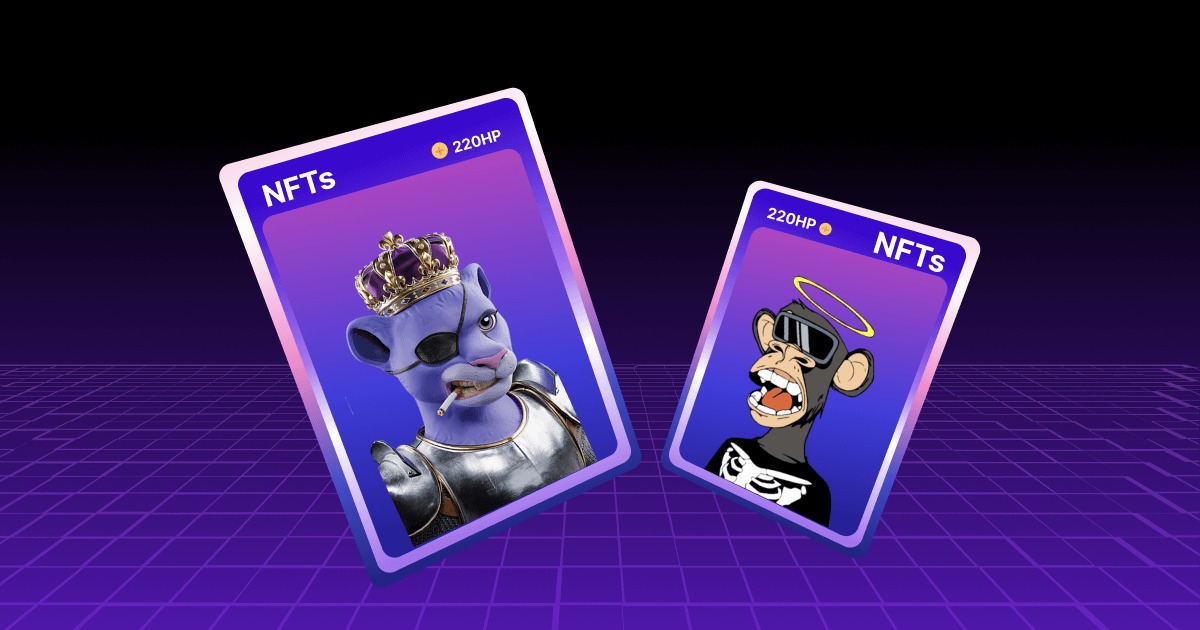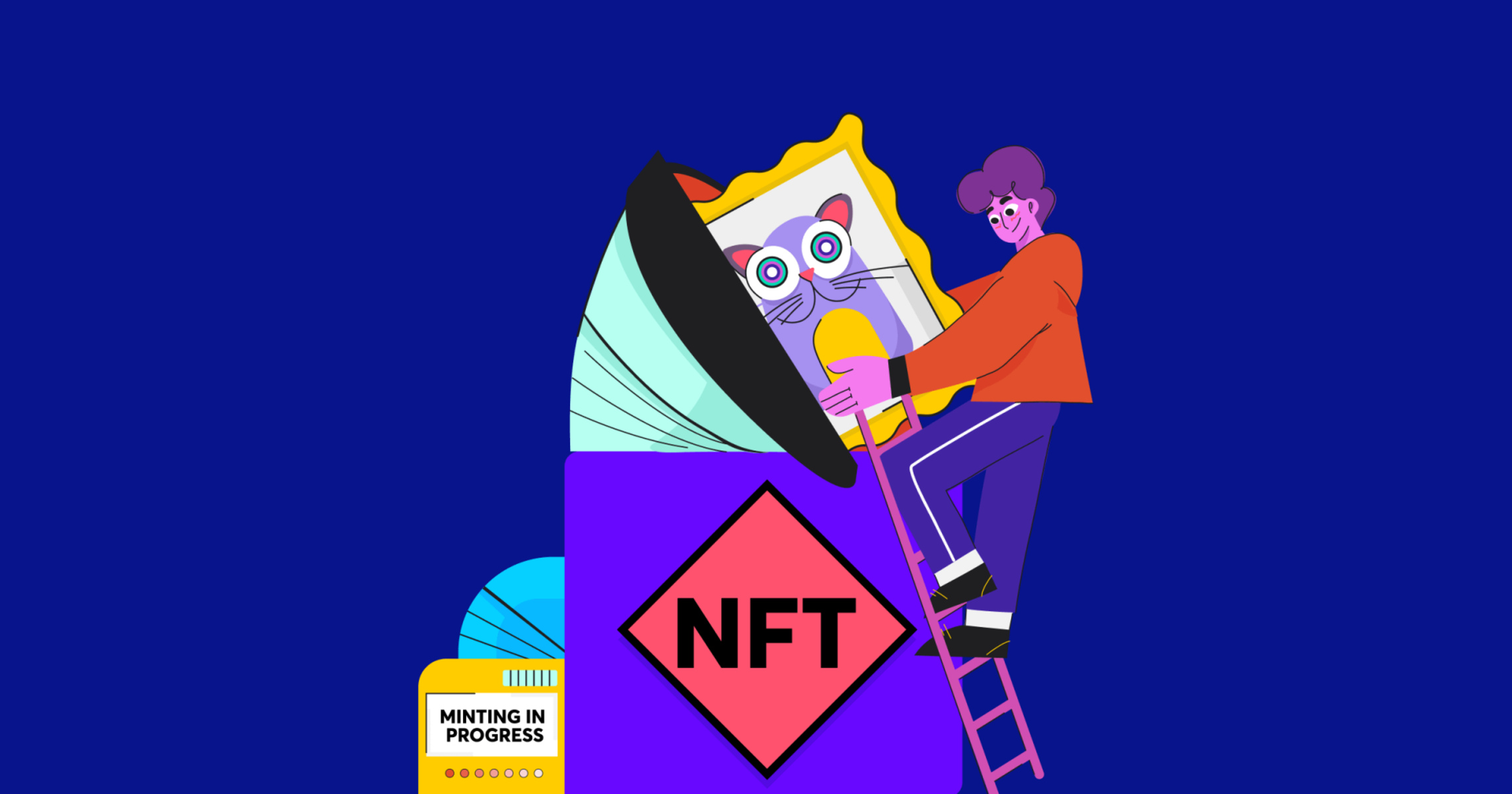Introduction
When it comes to the digital world, there’s a buzzword that has been gaining traction in recent years – NFTs, or Non-Fungible Tokens. These unique digital assets have taken the art, gaming, and investment worlds by storm, offering new possibilities and opportunities for creators and collectors alike.
An NFT is a type of digital asset that represents ownership or proof of authenticity of a unique item or piece of content, such as artwork, music, videos, or even virtual real estate. Unlike cryptocurrencies like Bitcoin or Ethereum, which are fungible and can be exchanged for one another, NFTs are indivisible and cannot be directly exchanged on a one-to-one basis. Each NFT has its own distinct value and cannot be replicated.
Collecting NFTs has become a popular trend, with enthusiasts and collectors flocking to online marketplaces to acquire digital artwork, trading cards, or virtual items. These digital collectibles have the potential to appreciate in value over time, making them an attractive investment opportunity.
Investing in NFTs has become a viable option for those looking to diversify their portfolio or explore new avenues of investment. With the rapid rise of digital art and the increasing demand for unique digital assets, investing in NFTs has the potential for significant returns.
Gaming with NFTs has revolutionized the gaming industry by introducing true ownership and interoperability within virtual worlds. Players can now buy, sell, and trade in-game items, characters, or land, giving them a sense of ownership and control over their virtual assets. This has opened up new possibilities for gamers to monetize their skills and assets.
Virtual real estate has emerged as a lucrative market within the NFT space. Just as people invest in physical properties, virtual real estate allows individuals to own and trade virtual land or spaces within metaverses. These virtual spaces can be utilized for various purposes, such as hosting events, showcasing digital art, or building virtual businesses.
The world of art has been greatly impacted by NFTs, allowing digital artists to monetize their work and gain recognition in a new way. Digital artwork can now be minted as NFTs, providing artists with proof of ownership and the potential to sell their creations directly to buyers, without the need for intermediaries.
Tokenizing physical assets is another use case for NFTs. By representing physical assets such as real estate, luxury goods, or even intellectual property as NFTs, individuals can fractionalize ownership, making it more accessible to a wider audience and enabling greater liquidity in traditionally illiquid markets.
The concept of the metaverse, a virtual reality space where users can interact with each other and digital content, has gained significant attention. NFTs play a crucial role in the development of the metaverse, shaping the virtual economy and allowing users to own, trade, and showcase their digital assets within this immersive virtual world.
Lastly, NFTs have also been embraced as a means of supporting causes and donating to charitable organizations. Artists and creators often dedicate a portion of their NFT sales to charitable initiatives, providing a unique way for individuals to contribute to social and environmental causes.
In this article, we will explore the various possibilities and use cases of NFTs in more detail. From collecting and investing, to gaming and virtual real estate, NFTs present new and exciting opportunities in the digital realm.
Collecting NFTs
One of the most prominent use cases of NFTs is collecting digital assets. NFT collectors are drawn to the uniqueness and scarcity of these digital items, be it digital artwork, virtual trading cards, or even virtual pets.
Collecting NFTs has become a way for individuals to express their personal tastes and interests in the digital realm. With a plethora of online marketplaces dedicated to NFTs, collectors can browse and acquire digital assets from a wide range of artists and creators.
One of the key advantages of collecting NFTs is the proof of ownership and authenticity that comes with each token. Unlike traditional digital files, where copies can be easily replicated and shared, NFTs provide a clear record of ownership on the blockchain, ensuring that the collector has the original and verifiable version of the asset.
Moreover, NFTs often come with additional perks or benefits associated with ownership. Artists may offer exclusive access to future releases, limited edition content, or even physical merchandise to owners of specific NFTs. These perks add value to the collectible and incentivize collectors to actively engage with the creator and the NFT community.
Collecting NFTs can be a highly rewarding experience both personally and financially. Some collectors acquire NFTs purely for the enjoyment and aesthetic value they bring, while others see it as a long-term investment opportunity. It’s not uncommon to see NFTs appreciate in value over time, especially if the artist or the collection gains popularity or recognition.
Engaging with the NFT community is an essential part of the collecting experience. Many collectors join online forums, social media groups, or attend virtual events to connect with fellow enthusiasts and stay updated on the latest trends and releases. It’s a vibrant and dynamic community where collectors can share their passion, discuss their favorite pieces, and even trade or collaborate on NFT projects.
Although collecting NFTs can be exciting and rewarding, it’s essential to approach it with careful consideration. Due diligence is crucial, particularly when it comes to verifying the authenticity and reputation of artists and platforms. Collectors should also be mindful of the risks and volatile nature of the NFT market, as values can fluctuate significantly.
In summary, collecting NFTs offers a unique opportunity to own and appreciate digital assets in the digital world. From digital art to virtual trading cards, NFT collectors can curate their virtual collections while enjoying the benefits of ownership and engaging with a passionate community of like-minded individuals.
Investing in NFTs
Investing in NFTs has emerged as a popular and potentially lucrative option for those looking to diversify their investment portfolios. NFTs offer a unique opportunity to invest in digital assets with the potential for significant returns.
One of the main reasons investors are drawn to NFTs is their potential for appreciation in value over time. Just like traditional artworks or collector’s items, certain NFTs have the potential to become highly sought after, driving up their market value. As the demand for digital art and unique digital assets continues to grow, early investors in NFTs have seen substantial returns on their investments.
Furthermore, investing in NFTs allows individuals to support artists and creators directly. This aspect of investing in NFTs resonates with those who appreciate and value the work of artists, as it gives them the opportunity to directly contribute to their success and financial well-being, while potentially profiting from the investment.
Another benefit of investing in NFTs is the ability to participate in the primary and secondary markets. In the primary market, investors can purchase NFTs directly from the artists or creators, often at a lower price compared to the secondary market. This early access can provide an opportunity to acquire rare or limited edition NFTs before they gain broader popularity.
The secondary market, on the other hand, allows investors to buy and sell NFTs with other collectors. This market gives way to trading and speculation, where investors can take advantage of price fluctuations and market trends to generate profits. Platforms dedicated to NFT trading provide a convenient avenue for investors to navigate the secondary market and explore different investment opportunities.
It’s important to note that investing in NFTs carries risks as well. The NFT market can be volatile, with values fluctuating significantly. Additionally, the perceived value of an NFT is subjective and can be influenced by factors such as the reputation of the artist, the uniqueness of the content, and the broader market sentiment. Investors should conduct thorough research and due diligence before making any investment decisions.
Overall, investing in NFTs presents a unique opportunity to diversify investment portfolios and potentially profit from the growing demand for digital assets. As the NFT market continues to evolve and mature, investors can engage with artists and creators, support their work, and potentially realize substantial financial gains.
Gaming with NFTs
The integration of NFTs in the gaming industry has transformed the way gamers interact with virtual worlds, offering new possibilities for ownership and economic empowerment within games.
NFTs in gaming enable players to own and trade unique in-game items, characters, or virtual properties. Previously, players would spend hours earning or unlocking items and assets that were owned and controlled by the game developers. Now, with NFTs, players have true ownership of their digital assets, allowing them to buy, sell, or trade them freely.
This shift towards NFTs in gaming has opened up exciting avenues for monetization. Skilled players can now earn real-world value by selling rare in-game items they have acquired or by offering their services to other players. This has created a new economy within gaming, where players can turn their passion and skills into a source of income.
Additionally, NFTs bring interoperability to gaming, allowing assets to move between different games or platforms seamlessly. For example, a sword acquired in one game can be used in another game that supports NFT integration. This interoperability fosters a sense of continuity in the gaming experience and provides players with more options and flexibility.
Furthermore, NFTs have given rise to virtual land ownership within gaming. Players can now own virtual pieces of land, which they can use to build structures, host events, or even monetize through virtual businesses. This opens up opportunities for creativity and entrepreneurship within virtual worlds, with players building and designing their own virtual experiences.
Gaming communities have also embraced NFTs as a way to reward players and incentivize participation. Game developers can issue limited edition NFTs as rewards for achievements or as loyalty bonuses, giving players a sense of exclusivity and recognition for their accomplishments.
However, it’s important to note that the adoption of NFTs in gaming has raised concerns about the potential for exploitation and inequality. Some have questioned the fairness of in-game economies with high-value NFTs, as it can create a divide between players who can afford to purchase valuable assets and those who cannot.
Despite these concerns, the integration of NFTs in gaming has opened up a world of possibilities for players. It has transformed gaming into a more immersive and economic-driven experience, where players have the opportunity to truly own their virtual assets, monetize their skills, and engage in a vibrant virtual economy.
Virtual Real Estate
Virtual real estate has emerged as a fascinating and lucrative market within the realm of NFTs. Just as people invest in physical properties, virtual real estate allows individuals to own and trade virtual land or spaces within metaverses – virtual worlds created by combining augmented and virtual reality.
Virtual real estate provides a unique opportunity for individuals to explore and create within these virtual worlds. It allows users to build, design, and customize their virtual spaces, creating a personalized digital environment that reflects their preferences and style. These spaces can be used for various purposes, such as hosting events, showcasing digital art collections, or even running virtual businesses.
One of the key advantages of investing in virtual real estate is the potential for appreciation in value. As metaverses continue to grow and gain popularity, the demand for prime virtual locations increases. Early investors who acquire valuable virtual real estate can benefit from the rising demand and sell their properties at a profit.
Moreover, virtual real estate offers the opportunity for individuals to participate in the development and evolution of these virtual worlds. Users can collaborate with other virtual property owners to create interconnected spaces, fostering a sense of community and interaction within the metaverse.
Virtual real estate has also become a hub for digital art and creative expression. Artists and creators can display their digital artwork within virtual galleries or exhibitions, reaching a global audience of art enthusiasts. This integration of art and virtual real estate provides a dynamic and immersive experience, where users can explore unique art installations in a virtual environment.
However, investing in virtual real estate does come with considerations. The value of virtual real estate can be influenced by the popularity and growth of the metaverse it exists in. It’s essential for investors to research and understand the metaverse’s community, development plans, and future potential before making any investment decisions.
While virtual real estate holds great potential, some skeptics question the long-term viability and the potential for a bubble similar to what was seen in the physical real estate market. However, advocates argue that virtual real estate is not bound by physical limitations and can offer an infinite number of possibilities within the digital realm.
Overall, virtual real estate represents a promising frontier within the NFT space. It provides individuals with the opportunity to own and trade virtual land, shape virtual worlds, and engage in a vibrant community of artists, creators, and virtual property owners. As the metaverse and virtual reality technologies continue to advance, virtual real estate holds the potential to become a thriving and valuable asset class.
Digital Art and NFTs
NFTs have revolutionized the world of digital art, providing artists with new opportunities to monetize their work and gain recognition in a way that was previously elusive. Digital art, once viewed as ephemeral and easily copied, can now be transformed into unique and valuable assets through the power of NFTs.
By minting their digital artwork as NFTs, artists can prove ownership and authenticity of their creations on the blockchain. Each NFT acts as a digital certificate of ownership, allowing artists to sell their work directly to buyers without the need for intermediaries or galleries. This direct artist-to-consumer relationship has democratized the art industry, enabling artists to retain more control over their artworks and revenue.
NFTs have opened up new revenue streams for artists, who can now earn royalties each time their NFTs are sold or traded in the secondary market. This royalty feature provides ongoing income for artists as the value of their artwork appreciates over time, contributing to the long-term sustainability of their artistic careers.
Another advantage of NFTs for digital artists is the ability to engage with their audience in new and immersive ways. Artists can create limited edition NFTs or offer exclusive perks and experiences to NFT owners, building strong and loyal communities around their work. This direct connection between artist and collector fosters a deeper appreciation for the artwork and allows artists to receive feedback and support directly from their audience.
The NFT market has witnessed a surge in interest and participation from both traditional artists and digital natives. Established artists are exploring the potential of NFTs to expand their reach and connect with a global audience, while emerging artists are finding newfound opportunities to showcase their creativity and gain recognition in the digital art world.
Despite the newfound popularity of NFTs in the art world, there are debates around the environmental impact of the technology. The process of minting NFTs requires significant energy consumption, leading to concerns about carbon emissions and sustainability. However, efforts are being made to address these concerns and explore more eco-friendly alternatives to NFT creation.
As the digital art market continues to evolve, NFTs offer artists a new way to monetize their digital creations and reach a wider audience. It has created a paradigm shift, transforming digital art from a fleeting experience into a lasting and valuable asset that can be bought, sold, and appreciated for its artistic merit.
Digital art and NFTs have also prompted discussions around the definition of art and what constitutes its value. The intersection of technology, creativity, and ownership has challenged traditional notions of art, sparking conversation and redefining the art landscape for the digital age.
Overall, NFTs have propelled digital art into the mainstream and provided artists with a platform to showcase their talent, express their creativity, and gain financial empowerment. The integration of NFTs in the art world has ushered in a new era of accessibility and possibility, changing the way we perceive, collect, and appreciate digital art.
Tokenizing Physical Assets
The concept of tokenizing physical assets using NFTs has opened up new possibilities for ownership, investment, and liquidity in traditionally illiquid markets. Tokenization provides a way to represent physical assets, such as real estate, luxury goods, or intellectual property, as unique digital tokens on the blockchain.
Tokenizing physical assets offers several advantages. Firstly, it allows for fractional ownership, meaning that high-value assets can be divided into smaller, more affordable shares. This opens up investment opportunities to a wider audience who may not have had access to these assets otherwise.
In addition, tokenization can unlock liquidity in traditionally illiquid markets. By representing physical assets as tokens, they can be bought, sold, or traded on digital marketplaces with ease, eliminating the need for time-consuming and costly processes such as property transfers or art auctions.
Furthermore, tokenization provides transparency and proof of ownership through the use of smart contracts on the blockchain. Each token represents a specific share or portion of the physical asset, and the ownership details are recorded immutably on the blockchain, providing a trustless and verifiable system.
Real estate is one area where tokenization has gained significant traction. Tokenizing properties allows investors to diversify their portfolios and gain exposure to different real estate markets. Fractional ownership of properties enables individuals to invest in properties that were previously out of reach or held limited investment opportunities.
Luxury goods, such as collectible watches or designer handbags, can also be tokenized. This allows owners to prove the provenance and authenticity of their luxury items and potentially sell or trade them on digital platforms.
Intellectual property, such as patents or copyrights, can also be tokenized. This gives creators and inventors the ability to monetize their intellectual assets by selling or licensing specific portions of their rights to other parties.
However, tokenization of physical assets is not without its challenges. The legal and regulatory framework surrounding tokenized assets is still evolving, and there are concerns related to compliance, security, and investor protection. Additionally, the valuation of tokenized assets can be subjective and may require robust due diligence and appraisal processes.
Overall, tokenizing physical assets has the potential to democratize access to traditionally exclusive markets and create new investment opportunities. It enables fractional ownership, enhances liquidity, and provides transparency and security through blockchain technology. While challenges remain, tokenization has the power to reshape the way we perceive and interact with physical assets in the digital age.
The Rise of the Metaverse
The concept of the metaverse has garnered significant attention in recent years, fueled by advancements in virtual reality, augmented reality, and blockchain technology. The metaverse refers to a collectively shared virtual reality space where users can interact with each other and digital content in real-time.
With the rise of NFTs, the metaverse has gained even more momentum, as it offers a perfect environment for the ownership, trade, and utilization of these unique digital assets. NFTs enable users to showcase their digital collections, virtual real estate, and other virtual assets within the metaverse.
In the metaverse, individuals can create avatars, navigate virtual environments, attend events, socialize with others, and engage in a wide range of activities much like in the physical world. From virtual concerts to virtual marketplaces, the possibilities for immersive experiences are endless.
This digital realm holds immense potential for various industries. Gaming, in particular, stands to benefit greatly from the metaverse. Games can be seamlessly integrated into the metaverse, enabling players to move between different virtual worlds, bringing their NFT-owned assets with them, and engaging in cross-platform interactions.
Virtual real estate within the metaverse has become a booming market, with individuals buying and selling virtual land or spaces to create unique virtual experiences. Users can explore, socialize, and even conduct virtual business activities within these virtual properties.
The rise of the metaverse also presents opportunities for businesses to establish a virtual presence and engage with consumers in new ways. Brands can create immersive marketing experiences, host virtual events, and sell virtual products, capitalizing on the growing popularity and reach of the metaverse.
Integration with blockchain technology makes the metaverse even more powerful. Blockchain ensures transparency, security, and provenance of digital assets, including NFTs, and allows for decentralized ownership and control within the metaverse.
Despite all the excitement surrounding the metaverse, there are challenges to consider. Technical hurdles, standardization, scalability, and ensuring a seamless user experience are among the key obstacles that need to be addressed for the metaverse to reach its full potential.
As technology continues to advance, and with the increasing popularity of NFTs and virtual experiences, the metaverse is poised to become an integral part of our digital lives. It holds the promise of connecting people across borders, enabling new forms of creativity, and revolutionizing industries ranging from gaming to entertainment, commerce, and beyond.
The metaverse represents a new frontier of digital innovation, where the lines between the physical and virtual worlds blur, and personalized, immersive experiences await those who venture into this interconnected digital realm.
Donating and Supporting Causes
The integration of NFTs in the world of charitable giving has provided new avenues for individuals to support causes and make a positive impact. NFTs offer artists and creators the opportunity to contribute to social and environmental initiatives, making a difference through their artistic creations.
Many artists dedicate a portion of their NFT sales to charitable organizations or community-driven projects. This approach allows artists to use their talent and influence to raise awareness and funds for causes they care about. By purchasing these NFTs, individuals can support both the artist and the charitable efforts simultaneously.
NFTs also provide transparency and traceability when it comes to charitable giving. The use of smart contracts on the blockchain ensures that donations are tracked in a secure and immutable manner. This transparency builds trust and enables individuals to see the direct impact of their contributions.
Furthermore, NFTs have the potential to unlock new possibilities for fundraising events and initiatives. Charities and organizations can collaborate with artists to create limited edition NFTs that are auctioned or sold for the benefit of the cause. The unique nature of NFTs and the excitement around their ownership can generate interest and attract supporters who are passionate about both the art and the cause.
Charitable efforts within the NFT space extend beyond artists and creators. Collectors and investors have also embraced the opportunity to make a difference through their NFT holdings. They can choose to donate or auction off their NFTs to support causes they believe in, leveraging the value and popularity of their digital assets to create impact.
Furthermore, the NFT community has come together to support various charitable initiatives. Collaborative projects and events have been organized to raise funds for global causes, disaster relief efforts, or initiatives promoting inclusivity, equality, and sustainability. These events showcase the power of the NFT community to create positive change through collective action.
However, it’s important to conduct due diligence and ensure that donations are directed towards reputable organizations or initiatives. With the popularity of NFTs and the rapid growth of the market, scammers and opportunistic actors may attempt to take advantage of charitable intentions.
In summary, NFTs have created a new paradigm for charitable giving, allowing individuals to support causes they care about while engaging with the world of digital art and collectibles. Artists, creators, collectors, and the wider NFT community have come together to use their platforms, influence, and resources to contribute to social, environmental, and humanitarian causes, creating a positive impact in a world increasingly connected through technology.
Conclusion
NFTs have revolutionized various aspects of the digital world, offering new opportunities and possibilities for creators, collectors, investors, gamers, and philanthropists alike. From collecting and investing in unique digital assets to exploring virtual worlds and supporting charitable causes, NFTs have reshaped industries and opened new frontiers.
The ability to prove ownership and authenticity, along with the potential for value appreciation, has made collecting and investing in NFTs an attractive endeavor. Individuals can curate digital collections, participate in marketplaces, and engage with a passionate community of creators and enthusiasts.
Gaming has been transformed by the integration of NFTs, allowing players to truly own and trade in-game items, characters, and virtual properties. This has opened up new possibilities for monetizing gaming skills and creating immersive experiences within virtual worlds.
Virtual real estate has become a thriving market within the NFT space, enabling individuals to buy, sell, and trade virtual land or spaces within metaverses. Virtual real estate is not just about ownership but also fostering creativity and entrepreneurship within digital environments.
Artists and creators have found new avenues for monetizing their digital creations through NFTs, which enable them to prove ownership, sell directly to buyers, and receive ongoing royalties. This has democratized the art industry, giving artists more control and empowering them financially.
Tokenizing physical assets has introduced a method to represent and trade real-world assets as unique digital tokens on the blockchain. This has unlocked liquidity, fractional ownership, and increased accessibility to markets that were once exclusive or illiquid.
The rise of the metaverse, a virtual reality space where users can interact with each other and digital content, presents exciting opportunities for immersive experiences, creativity, and new forms of interaction. The metaverse integrates seamlessly with NFTs, enabling users to showcase their digital assets, participate in cross-platform gaming, and create unique virtual environments.
Lastly, NFTs have paved the way for donating and supporting causes, allowing artists, creators, collectors, and the wider community to use their platforms and resources for charitable initiatives. NFTs provide transparency, traceability, and the potential for fundraising events that engage NFT enthusiasts who are passionate about both the art and the cause.
As with any emerging technology, challenges and considerations exist. These include ensuring sustainable practices, addressing legal and regulatory frameworks, navigating technical hurdles, and fostering inclusivity within the NFT space.
In conclusion, NFTs have revolutionized the digital world, offering new ways to collect, invest, create, interact, and make a positive impact. The possibilities and potential for growth within the NFT space are vast, as this technology continues to evolve and shape the future of digital experiences and ownership.







